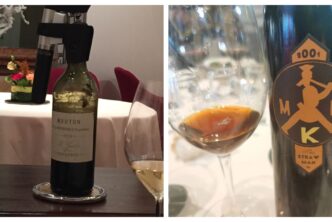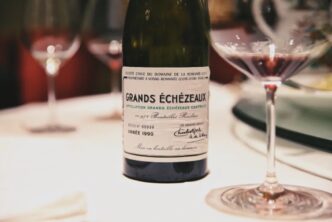Speri 2016 Amarone della Valpolicella Classico Sant’Urbano 95+

Speri is about as sure a bet there is in Veneto’s red wines: you just cannot go wrong with just about anything this estate produces (granted, allowing for variations in vintage quality). A member of the prestigious Famiglie Storiche (Historic Families) group of Amarone producers that, save for a handful of other estates (and I literally mean five other estates) harbours practically all the best producers of Amarone (including, for example, Brigaldara, Masi, Tedeschi and Tenuta Sant’Antonio), you won’t find many better Valpolicella, Valpolicella Ripasso, Amarone and Recioto della Valpolicella wines than you will at this address.
Speri has many feathers in its cap (not the least of which is a highly traditional yet clean approach to winemaking). The estate only grows local native grapes (the classic Corvina, Corvinone, Rondinella, and Molinara, but also smaller percentages of others, including Cabrosina, Pelara -a irus-affected biotype of Dindarella, and Oseleta). Furthermore, it only grows them in the Valpolicella Classica zone, an area that clearly boasts a better terroir than other similarly named Valpolicella production zones such as the Valpantena or the Valpolicella Orientale (where producer skill is even more important than usual in succeeding to make high quality wines; it can be done of course, just witness the standout products of Dal Forno, but it’s undoubtedly more of a chore).
Speri’s sixty hectares of vineyards are located at about 120-350 meters above sea level and the estate’s wines are characterized by bearing the vineyard name on the label: for example, the Vigneto Monte Sant’Urbano for the Amarone and the La Roggia for the Recioto (it is a little-known fact nowadays, but historically the sweet Recioto della Valpolicella wines, always the area’s most famous, sought after and expensive, were made with grapes sourced from different vineyards than those used to make the classically dry Amarone wine – a relatively recent newcomer to the Veneto wine scene). Speri’s vineyards are also characterized by the “Pergoletta Speri” (or “Open-Inclined Pergoletta), a modified Pergola Veronese training system (in which the metal bar on which the vine’s branches rest on is inclined so as to improve vineyard ventilation and sunlight exposure) that has quickly become a staple feature of many vineyards in the Valpolicella area. After years of having engaged in sustainable farming, Speri achieved organic certification for its entire production in 2015.
Make no mistake about it, the Speri 2016 Amarone della Valpolicella Classico Sant’Urbano is absolutely surperb. A blend of 70% Corvina Veronese and Corvinone (beware of all those producers who generically write of a “70% Corvina” in their blend, for that is neither accurate nor legal, given that the wine has to be made with Corvina and Corvinone and the two are distinct varieties not one and the same as many continue to think), 25% Rondinella, and 5% Molinara (and again, beware the many websites where they have the blend of this wine completely wrong, omitting the Molinara, which is instead a vital component of Amarone wines in general, and of this one by Speri in particular). The grapes come from the Monte Sant’Urbano vineyard area situated at about 280-350 meters above sea level in the municipality of Fumane. The grapes are air-dried for about three and a half months after picking, and the wine is aged twenty-four months in 500 liter French oak tonneaux and eighteen months in medium-to-large Slavonian oak casks. This is followed by a further twelve months I bottle prior to the wine going on sale. Deep ruby-red in colour but not inky (which despite what you might have been led to believe is precisely the colour of a Corvina-dominated wine, as the grape does not give you inky-black wines on its own), the rich nose is initially shut down but blossoms with aeration revealing elegant and ripe aromas of red cherry, dark plum, minerals, campfire ash, tar, violet, and cocoa. The mineral and red and dark fruit elements repeat in the mouth, where the fleshy yet silky, round yet steely mouthfeel is nicely extended on the long back end by vibrant, harmonious acidity. There is just the slightest hint of sultana raisins and dried figs here, but these are kept at a minimum, making this an Amarone that is far removed from some of the downright porty-chocolate-covered raisin-like sweet wines that have turned off many a wine lover. The 2016 vintage has turned out to be a great one for Amarone, and Speri’s very rich and ripe yet extremely elegant and even somewhat austere wine embodies the best of Amarone’s exuberance and elegance, a combination that only the greatest estates can pull off. Just make sure you decant this beauty about three hours ahead at least (even longer won’t hurt any) for maximum enjoyment. Drinking window: 2025-2035.
Le Grappin 2019 Santenay Premier Cru Les Gravières Rouge 91

Andrew and Emma Neilsen are part of the new breed of négociant-winemakers that are meeting with well-deserved success and a wine as good as this one will only enhance their standing with wine lovers everywhere. The pair seeks out special quality sites in under-appreciated reaches of Burgundy and work with passionate vignerons and small lots to make fruit-forward, juicy wines brimming with fruit that are delicious to drink right off the bat. The Le Grappin 2019 Santenay Premier Cru Les Gravières Rouge is just such a wine and a true joy to drink. Bright deep red in colour, it exudes crushed red and black cherry, as well as raspberry nectar aromas that are immensely fruity and perfumed. Then similarly perfumed in the mouth, with a compelling sweetness to the rich red berry and cherry flavours, with only a hint of violet and white pepper to add alittle diversity to the unabashedly fruit-forward personality. Closes medium-long with a clean mouthfeel and a hint of raspberry jam, this is not unlike a high-quality, concentrated Volnay (from a rich year like 2005 or 2009), perhaps not surprisingly given that the 45-year- to 70+ year-old vines are planted on a very gravelly soil (small pebbles over Argovian marl, hence the site’s name of “Les Gravières) that is somewhat reminiscent of some sections of Volnay. Admittedly not the last word in complexity, this is just exceptionally delicious! Bottled with minimal sulfur use, as well as unfined and unfiltered, this wine showcases just how good “natural” wines can be when made by competent individuals who don’t try to pass off aromas that rival those of a dead horse’s armpit as being of “terroir”. If I didn’t think it might be taken as a negative, I’d tell you every sip of the Le Grappin 2019 Santenay Premier Cru Les Gravières is so good, so yummy, and so delicious that it had me wondering what it would taste like if smothered on pancakes or waffles. OK, so I won’t say that. (Note that the “Rouge” in the name is necessary because they make a similarly named white wine too.) Drinking window: now-2027.

 English
English

